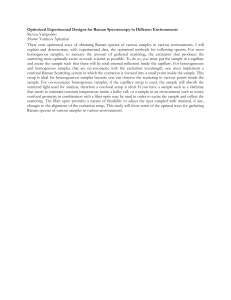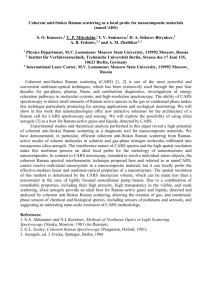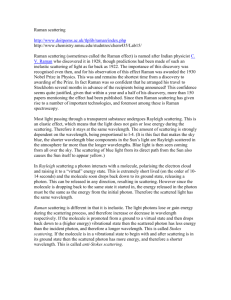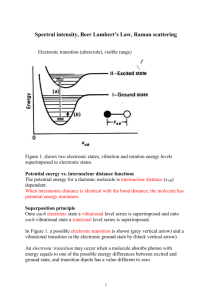Jablonski Energy Diagram for Raman Scattering
advertisement
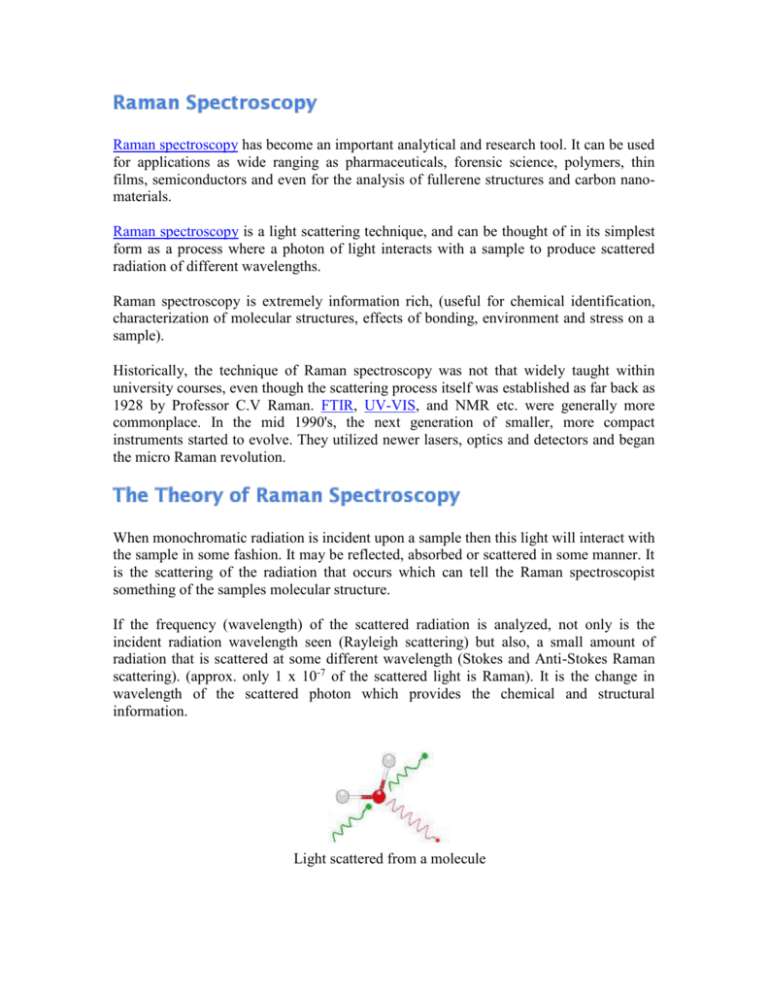
Raman spectroscopy has become an important analytical and research tool. It can be used for applications as wide ranging as pharmaceuticals, forensic science, polymers, thin films, semiconductors and even for the analysis of fullerene structures and carbon nanomaterials. Raman spectroscopy is a light scattering technique, and can be thought of in its simplest form as a process where a photon of light interacts with a sample to produce scattered radiation of different wavelengths. Raman spectroscopy is extremely information rich, (useful for chemical identification, characterization of molecular structures, effects of bonding, environment and stress on a sample). Historically, the technique of Raman spectroscopy was not that widely taught within university courses, even though the scattering process itself was established as far back as 1928 by Professor C.V Raman. FTIR, UV-VIS, and NMR etc. were generally more commonplace. In the mid 1990's, the next generation of smaller, more compact instruments started to evolve. They utilized newer lasers, optics and detectors and began the micro Raman revolution. When monochromatic radiation is incident upon a sample then this light will interact with the sample in some fashion. It may be reflected, absorbed or scattered in some manner. It is the scattering of the radiation that occurs which can tell the Raman spectroscopist something of the samples molecular structure. If the frequency (wavelength) of the scattered radiation is analyzed, not only is the incident radiation wavelength seen (Rayleigh scattering) but also, a small amount of radiation that is scattered at some different wavelength (Stokes and Anti-Stokes Raman scattering). (approx. only 1 x 10-7 of the scattered light is Raman). It is the change in wavelength of the scattered photon which provides the chemical and structural information. Light scattered from a molecule Light scattered from a molecule has several components - the Rayleigh scatter and the Stokes and Anti-Stokes Raman scatter. In molecular systems, these frequencies are principally in the ranges associated with rotational, vibrational and electronic level transitions. The scattered radiation occurs over all directions and may also have observable changes in its polarization along with its wavelength. The scattering process without a change of frequency is called Rayleigh scattering, and is the same process described by Lord Rayleigh and which accounts for the blue color of the sky. A change in the frequency (wavelength) of the light is called Raman scattering. Raman shifted photons of light can be either of higher or lower energy, depending upon the vibrational state of the molecule. Jablonski Energy Diagram for Raman Scattering By far the stronger of the two processes is the Stokes scattering, whereby the photon is scattered at lower energy (shifted wavelength towards the red end of the spectrum) Since at room temperature the population state of a molecule is principally in its ground vibrational state this is the larger Raman scattering effect. (see the diagram above) A small number of molecules will be in a higher vibrational level, and hence the scattered photon can actually be scattered at a higher energy, (a gain in energy and a shift to higher energy and a blue shifted wavelength). This is the much weaker Anti-Stokes Raman scattering. The incident photons will thus interact with the present molecule, and the amount of energy change (either lost or gained) by a photon is characteristic of the nature of each bond (vibration) present. Not all vibrations will be observable with Raman spectroscopy (depending upon the symmetry of the molecule.) but sufficient information is usually present to enable a very precise characterization of the molecular structure. Hence, the amount of energy shift for a C-H bond is different to that seen with a C-O bond, and different again to that seen with a Metal-O bond. By looking at all these various wavelengths of scattered light, one can detect a range of wavelengths associated with the different bonds and vibrations.




